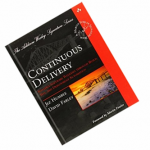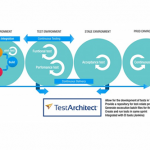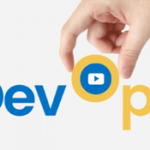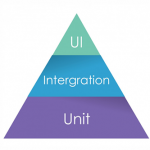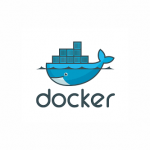How to Adopt the “Third Way” in the Dojo’s Method to Master CD

In The DevOps Handbook: How to Create World-Class Agility, Reliability, and Security in Technology Organizations the authors describe “The Three Ways” – the underlying principles forming the basis for all DevOps practices.
The Third Way is about creating a culture of continuous learning and experimentation, with an emphasis on practice and repetition as the path to mastery.
The idea that organizations must focus on continuous learning is not new. Peter Senge popularized the idea of the learning organization in his book The Fifth Discipline. Ikujiro Nonaka, the author of The New New Product Development Game (a foundation for the Scrum methodology), wrote on how successful companies leverage a culture of ongoing knowledge creation to create successful products and services. And the principle of Kaizen (“good change”), an integral part of the Toyota Production System, has its roots in the philosophy of Dr. W. Edwards Deming.
The question is: How do you create this culture of continuous learning and experimentation?
Typically, organizations approach learning by offering training in the form of courses and workshops. Courses can be beneficial but generally only apply to one skill area, are targeted at individual learning, and exercises are done in sandbox environments where learners never have to contend with real-world constraints. Concepts are difficult to apply after the course is over. The learning doesn’t stick and doesn’t lead to long-lasting change.
Additionally, training is a special, planned event. Employees are often restricted to a limited number of courses each year. The majority of the time is business as usual. This doesn’t exactly add up to a culture of continuous learning and experimentation. The question remains – how can today’s organizations achieve The Third Way?
Enter The Dojo
Credited with helping Target adopt Agile and DevOps, the Dojo concept is being implemented by organizations across a variety of domains including retail, telecommunications, finance, insurance, mass media, and travel.
So – what is the Dojo?
The Dojo is a physical space where whole product teams come together to undergo an immersive learning experience. The Dojo originated with a focus on DevOps but quickly expanded to include Agile/Lean, cloud architecture, microservices, security, and product discovery. Teams improve skills in these areas while building their products. All learning is done in the context of real-world work, with real, everyday constraints.
The idea that organizations must focus on continuous learning is not new. Peter Senge popularized the idea of the learning organization in his book The Fifth Discipline. Ikujiro Nonaka, the author of The New New Product Development Game (a foundation for the Scrum methodology), wrote on how successful companies leverage a culture of ongoing knowledge creation to create successful products and services. And the principle of Kaizen (“good change”), an integral part of the Toyota Production System, has its roots in the philosophy of Dr. W. Edwards Deming.
How Does It Work?
Dojos start with a lightweight intake process. During intake we work with teams to set them up for having a successful Dojo experience by helping them create full-stack teams, working with their leaders to ensure the team has time and support for learning and aligning the team’s learning goals with the product work they want to focus on in the Dojo.
Once this frame is established, a team then starts their Dojo experience. A typical Dojo experience format is six weeks in total duration, eight hours per day, with two sprints per week. Sprints are kept intentionally short to provide these advantages:
- The opportunity for repetition when learning new concepts
- Teams focus on breaking work down into small increments rather than getting bogged down estimating stories
- Teams learn to focus on finishing and validating work
- The cost of being wrong – emotionally and financially – drops significantly. It’s easy to recover from a “failure” after a two-and-a-half-day sprint.
A Dojo coach guides the team through their experience. Initially, the coach takes on the roles of teacher and guide as the team begins to understand and apply new practices. The coach then moves into a partnering role while the team starts finding their own way. Ultimately, the coach becomes a “reflector” and supports the team’s learning and experimentation efforts.
This last shift in coaching is critical. A Dojo experience is successful when the team learns how to incorporate continuous learning and experimentation into the way they work – i.e., they adopt The Third Way. Otherwise, the experience could just become another typical training event.
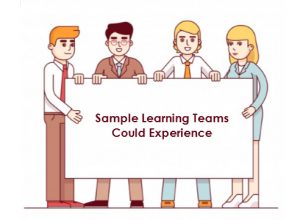
Sample Learning Teams Could Experience
Another significant difference between Dojo experiences and typical training events is that the Dojo is not organized around a specific curriculum. Dojos are staffed with coaches having various skills who can meet the team where they are. A typical Dojo experience usually involves work on the team’s continuous delivery pipeline. For some teams, additional learnings might be focused on microservice and API design while other teams focus more on improving automated testing or product discovery capabilities.
In addition, teams coming into the Dojo are encouraged to look at their entire product development value stream. Some of the most powerful “a-ha” moments have come when product communities see how CD pipelines aren’t just a means of automating manual build and deploy tasks but are a tool that enables quick testing and validation of product ideas.
There’s a significant benefit to having teams learn practices together. They see how various practices feed and support each other in a way that doesn’t happen in short courses focused on one practice.
Two examples (refer to diagrams below) of what teams work on in the first two weeks of their Dojo experiences are shown above. While the learning topics are different the format and focus on learning and experimentation are the same.

Starting Your Own
You don’t have to invest in a ten-thousand-square-foot space and staffing that can handle ten teams at once to start a Dojo. You can start small. Find a space where a team can work that gets them out of their normal working environment. Start with one team and a small group of coaches. Identify the learnings you want to invest in with the team and run your own experiment. Invest in your own continuous learning and experimentation.




